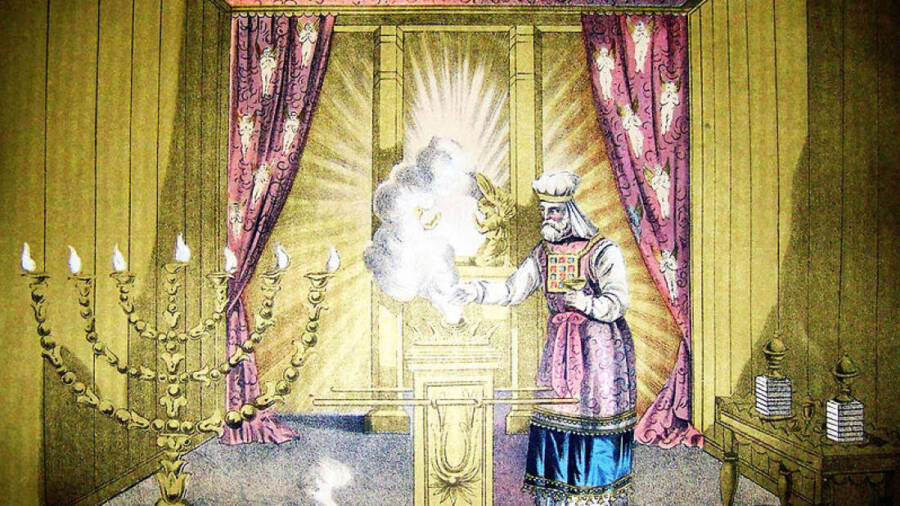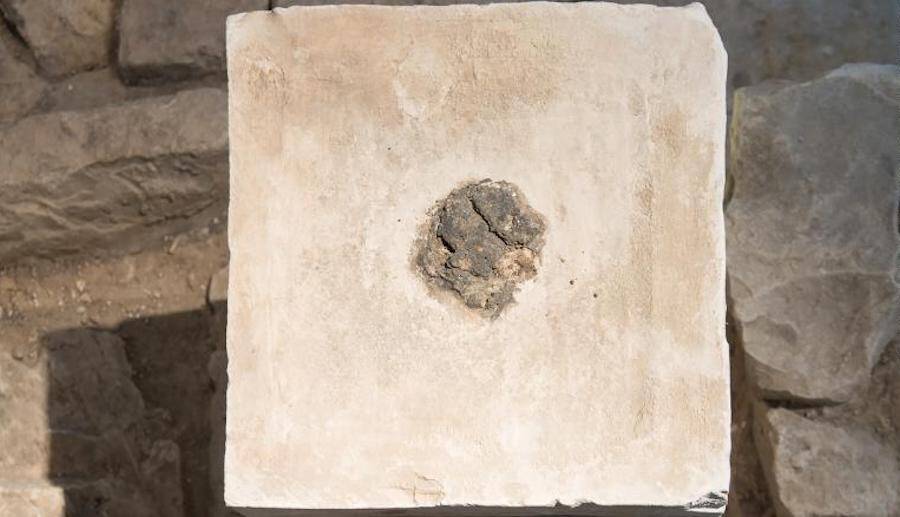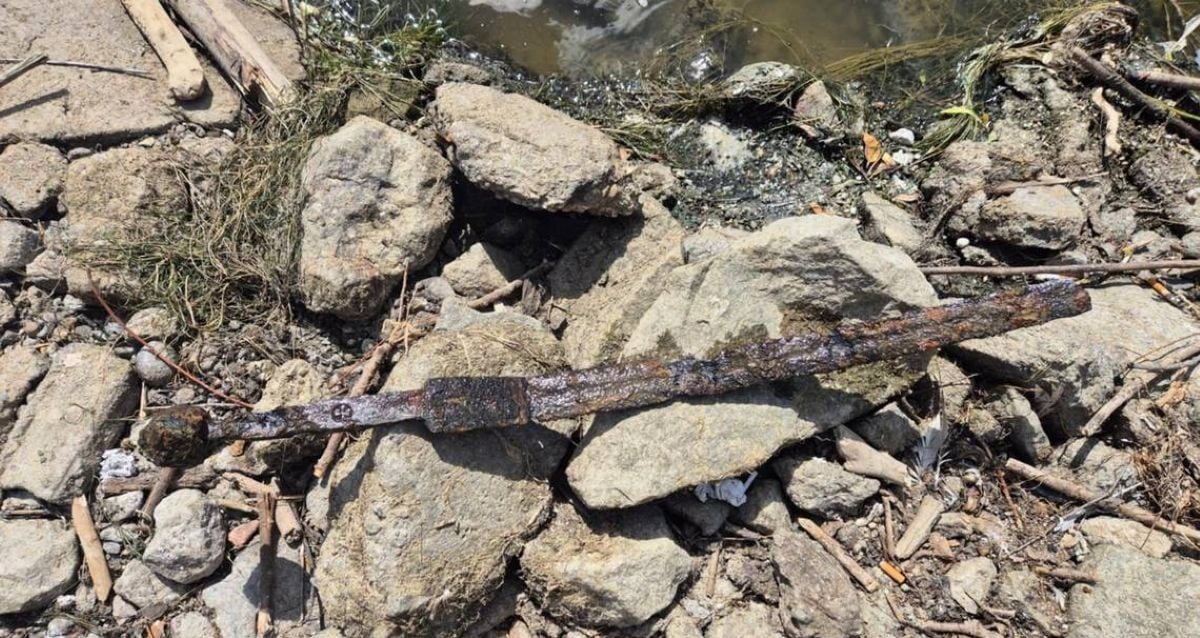“Ancient High: Archaeologists Unearth Shocking Evidence of Cannabis Rituals at 8th Century B.C. Biblical Shrine”
Perhaps most significant is that the shrine dates to a period when Judah was largely an assortment of rural settlements. The cella, which contained all items required in the religious rites, was considered the heart of the shrine — and thus aptly termed the “Holy of Holies.”

Public DomainThe “Holy of Holies” shrine as depicted in the 1890 Holman Bible.
It’s unclear why the shrine was buried. Its hiding could be ritualistic or perhaps to protect it from the occupying Assyrians of the time. One thing definitely seemed clear to Arie once the stairs, floor, and furniture of the shrine were moved from exhibits to galleries over the 2000s.
“This was the point I realized for the first time the real incense was really left there,” he said.
Chemical analysis of the dark residue discovered on the altars in the 1960s was either inconclusive or undisclosed until now. Arie realized around two years ago that modern techniques could shed invaluable light on the Biblical mystery. For him, the results were shocking.
“We know from all around the Ancient Near East and around the world that many cultures used hallucinogenic materials and ingredients in order to get into some kind of religious ecstasy,” he said. “We never thought about Judah taking part in these cultic practices.”
“The fact that we found cannabis in an official cult place of Judah says something new about the cult of Judah.”
The residues were identified with help from bioarcheologist Dvory Namdar of Israel’s Agricultural Research Organization in Bet-Dagan. The smaller altar was found to have been used for cannabis mixed with animal dung, while the larger one held the frankincense.













